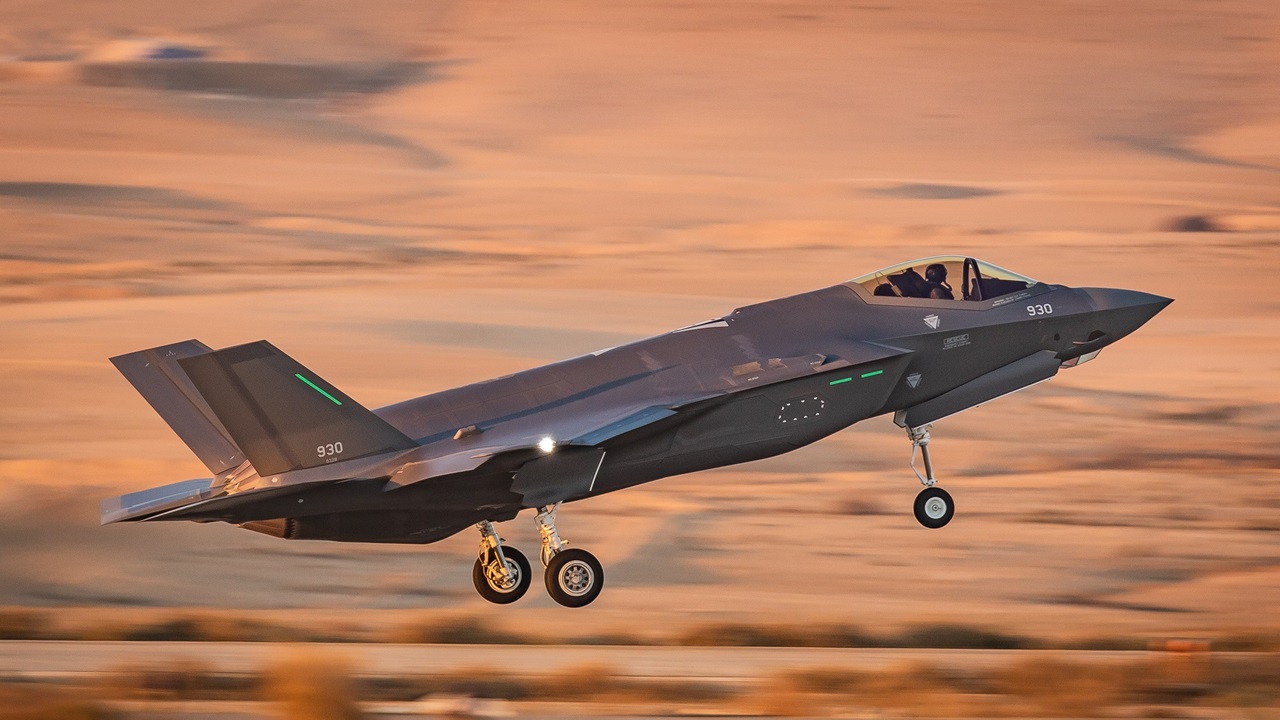What You Need to Know: Israel’s recent successful strike on Iranian military targets using F-35I Adir fighters has highlighted the effectiveness of the fifth-generation stealth aircraft, despite its critics. Flying nearly 1,000 miles without loss, the operation saw Israel’s F-35s evade and dismantle Iran’s Russian-supplied air defenses, marking a major tactical achievement.

-The success not only underscores the F-35’s operational value but also raises questions about the efficacy of Russian air defense systems, which failed to counter the F-35’s stealth.
-This event echoes past Israeli strikes that defied long-range challenges, reaffirming the capability of U.S.-made stealth against advanced defenses.
Israel’s F-35 Strike on Iran Proves Stealth Advantage Over Russian Defenses
The Lockheed Martin F-35 Lightning II has more than its fair share of detractors, who have repeatedly claimed the aircraft is too expensive and doesn’t really have a place in the current world order. The fact that so many of America’s allies and partners have lined up to buy the fifth-generation stealth fighter already suggests otherwise.
Few nations would seek to join a waiting list for inferior military hardware, but even the staunchest critics of the F-35 should admit that the aircraft “got the job done” in the early hours of Saturday when Israeli-piloted multirole fighters struck Iran. The fact that the aircraft flew nearly 1,000 miles to hit the targets would already be impressive, but the Israeli Air Force (IAF) claimed all the fighters made it home again.
The Islamic Republic made no claims of downing a single F-35 either. It didn’t even attempt to suggest otherwise.
“It seems to have gone off exactly as planned, with no losses on the Israeli side. That in and of itself is a major accomplishment,” The Times of Israel reported, adding, “The risks inherent in operations 1,600 kilometers (1,000 miles) from Israeli airspace are daunting. A minor complication can turn into a life-and-death challenge.”

It could be argued that Israel also “held back” in its strike on Saturday – likely following the “marching orders” from Washington not to target its adversary’s oil facilities or its nuclear program. Instead, the IAF carefully struck military targets including the Islamic Republic’s air defense systems.
That fact shouldn’t be understated. By striking the radar and advanced anti-aircraft platforms, Israel could strike again and Iran has lost much of its capability to counter an attack.
“The regime’s most advanced anti-aircraft systems were destroyed, and replacing them if their provider, Russia, is even willing or able to do so will not happen immediately. Its air defenses, which were ineffective on Saturday, are now even less capable with batteries and radars destroyed,” The Times of Israel further noted.
Lessons From History
Though the official name of this operation hasn’t been released, it is likely one that will be studied in years to come – much like Operation Opera in June 1981, which saw IAF F-16 Fighting Falcons and F-15 Eagles bomb the Osirak reactor in Iraq; and 1985’s Operation Wooden Leg, a daring aerial raid on the PLO’s headquarters in Tunis.

Those operations proved that distance wasn’t an issue for the IAF, and this recent strike also made clear that the F-35I Adir – the Israeli-specific variant of the Lightning II – could overcome the threat of Iran’s advanced air defense network.
Thus, the biggest loser might not even be Tehran following Saturday’s raid. It is Moscow, which has touted its air defense systems and made claims it can track and target the U.S.-made F-35 Lightning II, and even the F-22 Raptor air superiority fighter. While Russia almost certainly has even more advanced air defense systems than Iran, the fact that the Russian-made systems performed so poorly speaks volumes.
In other words, the scoreboard isn’t just Israel 1 – Iran 0, it is also American stealth 1 – Russian air defense 0.
Author Experience and Expertise: Peter Suciu
Peter Suciu is a Michigan-based writer. He has contributed to more than four dozen magazines, newspapers, and websites with over 3,200 published pieces over a twenty-year career in journalism. He regularly writes about military hardware, firearms history, cybersecurity, politics, and international affairs. Peter is also a Contributing Writer for Forbes and Clearance Jobs. You can follow him on Twitter: @PeterSuciu. You can email the author: [email protected].
Image Credit: Creative Commons and/or Shutterstock.
